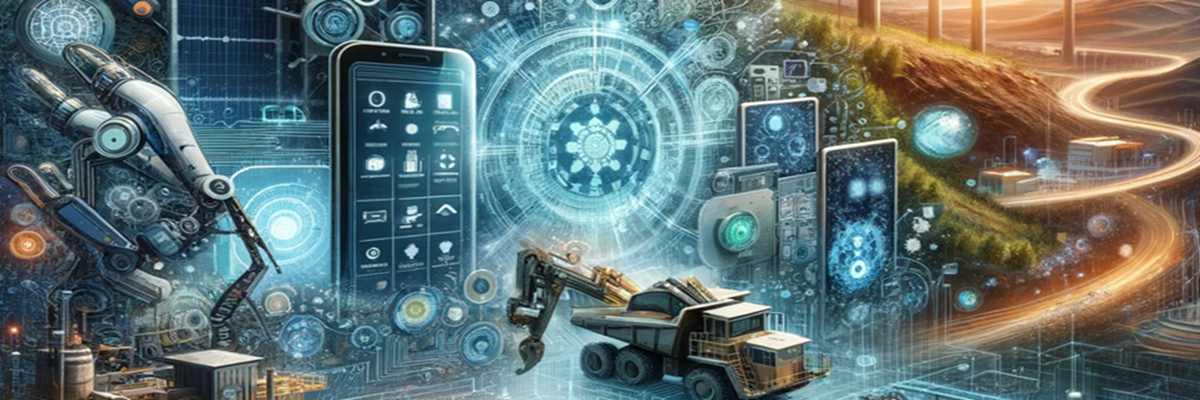FST BLOG
Securing the future: Navigating the role and challenges of Critical Minerals in Advanced Technologies
- 17 May 2024
- Business, Environment, General, Technology
- Magda Wolna

Critical minerals are a selected group of elements necessary for the global economy, technological progress and security. These include elements such as lithium, cobalt, nickel, rare earth elements (REEs) and graphite, which are essential in the production of high-tech devices, energy solutions and military applications. Their criticality is due to their essential role combined with the risks associated with their supply, which may be influenced by geopolitical issues, regulatory policies and market dynamics.
Renewable Energy Technologies
In the renewable energy sector, critical minerals such as lithium and cobalt are essential in lithium-ion batteries that power electric vehicles (EVs) and provide energy storage solutions for solar and wind energy systems. REEs such as neodymium are crucial for magnets, which are essential components of wind turbines. The transition to renewable energy is increasing the demand for these minerals, making them more essential than ever.
Electronics and Communication Devices
In electronics, minerals such as tantalum, tin and tungsten are used to produce capacitors and soldering materials necessary for the miniaturization of devices. These minerals enable the production of smaller, faster and more efficient devices, which are crucial in our increasingly digital world.
Defence Technologies
Critical minerals are also essential to national security. They are used to produce advanced defence technologies, including jet engines, missile guidance systems and other advanced military equipment. The strategic importance of these minerals makes them essential in defence applications, highlighting their role in the dynamics of global security.
Challenges in the Supply Chain of Critical Minerals
Critical mineral supply chains face numerous challenges that can impact global markets and industries that depend on these materials. These challenges result primarily from geopolitical tensions and environmental problems.
Geopolitical Risks
Much of the world's supply of key minerals such as rare earth elements (REEs) is dominated by China. This concentration creates vulnerabilities due to geopolitical risks, which could lead to significant supply disruptions. Such a scenario could have far-reaching effects on various manufacturing sectors around the world that depend heavily on these critical inputs.
Environmental Concerns
The extraction and processing of critical minerals poses serious environmental risks. Mining activities often result in habitat destruction and water pollution, raising conservation concerns. These environmental issues can lead to public opposition and result in more stringent regulatory challenges, further complicating mining operations. The demand for environmentally sustainable mining practices is becoming increasingly important as the activity comes under greater scrutiny from governments and environmental organizations.
Innovations in Technology and Supply Chain Management
Significant innovations and strategic initiatives are being implemented to meet the challenges in the critical minerals market:
Recycling and Recovery
Technological advancements are improving the efficiency of recycling critical minerals from electronic waste. This not only helps mitigate the environmental impact of mining, but also reduces dependence on pristine mineral sources. As e-waste continues to increase, efficient recycling technologies become crucial.
Synthetic and Alternative Materials
Research continues into synthetic alternatives and less scarce substitutes for critical minerals. These efforts are crucial to reducing dependence on minerals that are geologically rare and difficult to mine sustainably.
Advanced Mining Technologies
Emerging technologies are making the extraction of key minerals more efficient and environmentally sustainable. Innovations include automation and robotics, improved ore processing techniques, and improved waste management practices. These technologies aim to reduce the environmental footprint of mining and increase the efficiency of mineral extraction.
Future Prospects
Demand for critical minerals is expected to grow rapidly as technology continues to advance and the global economy becomes increasingly dependent on sustainable practices. This growing demand is prompting a re-evaluation of supply chains and driving investment in mining operations, recycling technologies and materials science research.
Policy and Regulation
Governments and industry are beginning to recognize the importance of ensuring stable and sustainable supplies of critical minerals. Strategic investment, combined with favourable policies and regulations, is essential to ensuring a continued supply of these minerals. Policies that promote mining, recycling and the development of alternative materials are particularly important in this regard.
Strategic Partnerships
Developing strategic partnerships and alliances between countries and companies can help secure supply chains of critical minerals. These partnerships are essential to mitigate risks associated with geopolitical tensions and market volatility.
Critical minerals are at the heart of technological advances that will shape our future. The relationship between these minerals and edge technologies is symbiotic, with each driving demand and development for the other. As we move towards a more technologically advanced and sustainable world, strategic management of critical mineral supplies will become increasingly important. Emphasizing sustainable mining practices, effective recycling and the development of alternative materials will be crucial in addressing the challenges associated with critical minerals. This comprehensive approach will ensure that these minerals continue to support technological progress and sustainability, without becoming a bottleneck in our progress towards a greener future.
References:
IEA (2021), The Role of Critical Minerals in Clean Energy Transitions.
The World Economic Forum (2020), What to know about critical minerals – the key to our clean energy future.
Magda, a dedicated scientist with over 15 years of experience in academia and industry, currently contributes her expertise to the High Throughput Cellular (HTC) Screening Facility at the University of Oxford
Prior to this role, Magda was a Team Lead in the University of Oxford's Covid-19 Serology Group, where she played a key role in screening, development and validation of the SARS-CoV-2 Serology High Throughput platforms and assays.
Her research encompasses diverse areas, from investigating iron regulation in the heart and placenta to participating in pioneering studies in cell division.
Magda's passion for scientific innovation seamlessly extends into her industry ventures, notably at the UK's national synchrotron facility, Diamond Light Source Ltd. There, she supported cutting-edge biological experiments using synchrotron radiation Fourier-transform infrared (SR-FTIR) microspectroscopy.
Apart from science, Magda is also passionate about photography, and holds a Fellowship Distinction of The Royal Photographic Society (FRPS).
